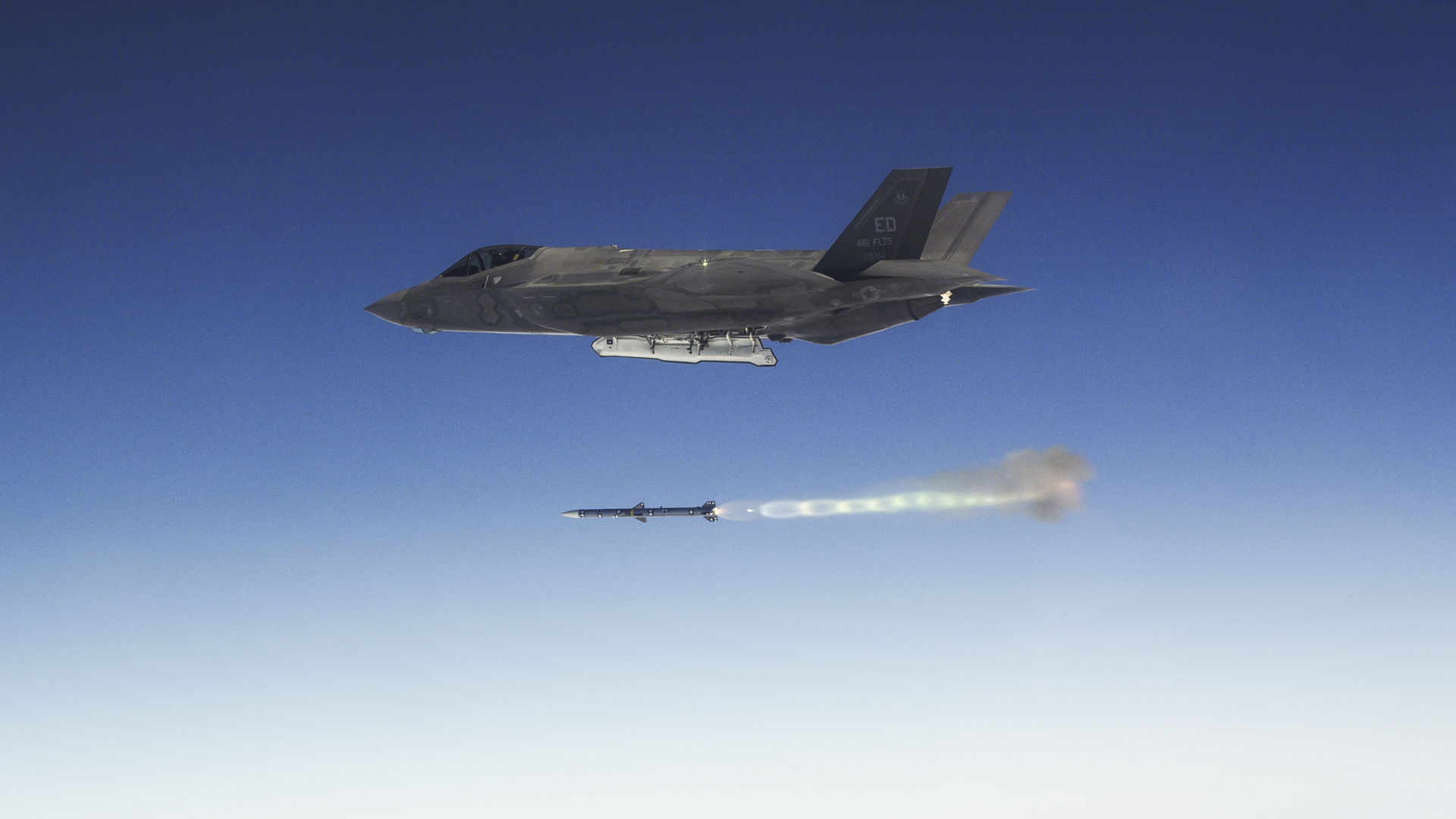
The Joint Program Office said a recently released report from the Director of Operational Test and Evaluation that criticized F-35 capabilities, was not able to evaluate final Block 3F software, which addressed many of those issues. Here, an F-35A fires an AIM-120 Advanced Medium-Range Air-to-Air Missile as part of Weapons Delivery Accuracy testing. Lockheed Martin Courtesy photo by Chad Bellay.
The F-35 Joint Program Office announced it will implement anti-ground collision software into the fleet five years earlier than planned.
Automatic Ground Collision Avoidance System (Auto-GCAS) software, which was developed by the Air Force Research Laboratory, was first installed in F-16s in 2014, according to a program office release. Since then, “seven pilots and six F-16 aircraft” have reportedly been saved by the system, causing the JPO to place “a premium” on speedy implementation.
“Expediting this lifesaving technology into the F-35 fleet by 2019 is estimated to prevent the loss of three aircraft, and more importantly, save the lives of three pilots,” F-35 Program Executive Vice Adm. Mat Winter said in a news release. “Over the service life of the F-35 fleet, having Auto-GCAS is estimated to prevent more than 26 ground collisions from happening.”
The F-35 fleet is currently equipped with a manual ground control avoidance system, which requires a pilot to be able to see and hear the system prompting manual control to fly away from the ground. This system is not effective if a pilot is spatially disoriented or incapacitated.
The new system is designed to determine when impact with the ground is imminent, and automatically maneuver by initiating a 5-G pull to recover. The software uses GPS position and system altitude, compared to an onboard Digital Terrain Database.
The program office’s announcement comes shortly after the Pentagon’s weapons tester released its annual report on F-35 development, claiming the F-35’s operational suitability is below requirements and that the overall fleet’s readiness is below the services’ expectations. The program office, in a Tuesday response, claimed the F-35 enterprise reached “critical milestones” in 2017 including completing Block 3F weapons testing.
The Pentagon’s evaluation focused on initial Block 3F software, which are “combat-ready loads” in the fleet today. This software covers critical mission threads, including strategic attack, close air support, suppression/destruction of enemy air defenses, and air superiority. The 2017 Director of Operational Test and Evaluation report outlines issues with successfully flying these mission sets, including the lack of a video data link to computer time-on-target for close air support and air-to-ground weapons tests that found problems with targeting joint direct attack munitions.
However, the program office said “report delivery timelines did not allow the DOT&E assessment to include final Block 3F software delivered under the System Development and Demonstration Program,” which “improves warfighting capability performance with enhanced sensors and targeting, improved data links, improved threat countermeasures, and enhanced weapons capability to include air-to-air missiles, air-to-ground munitions, and weapons employment throughout the full aircraft flight envelope.”